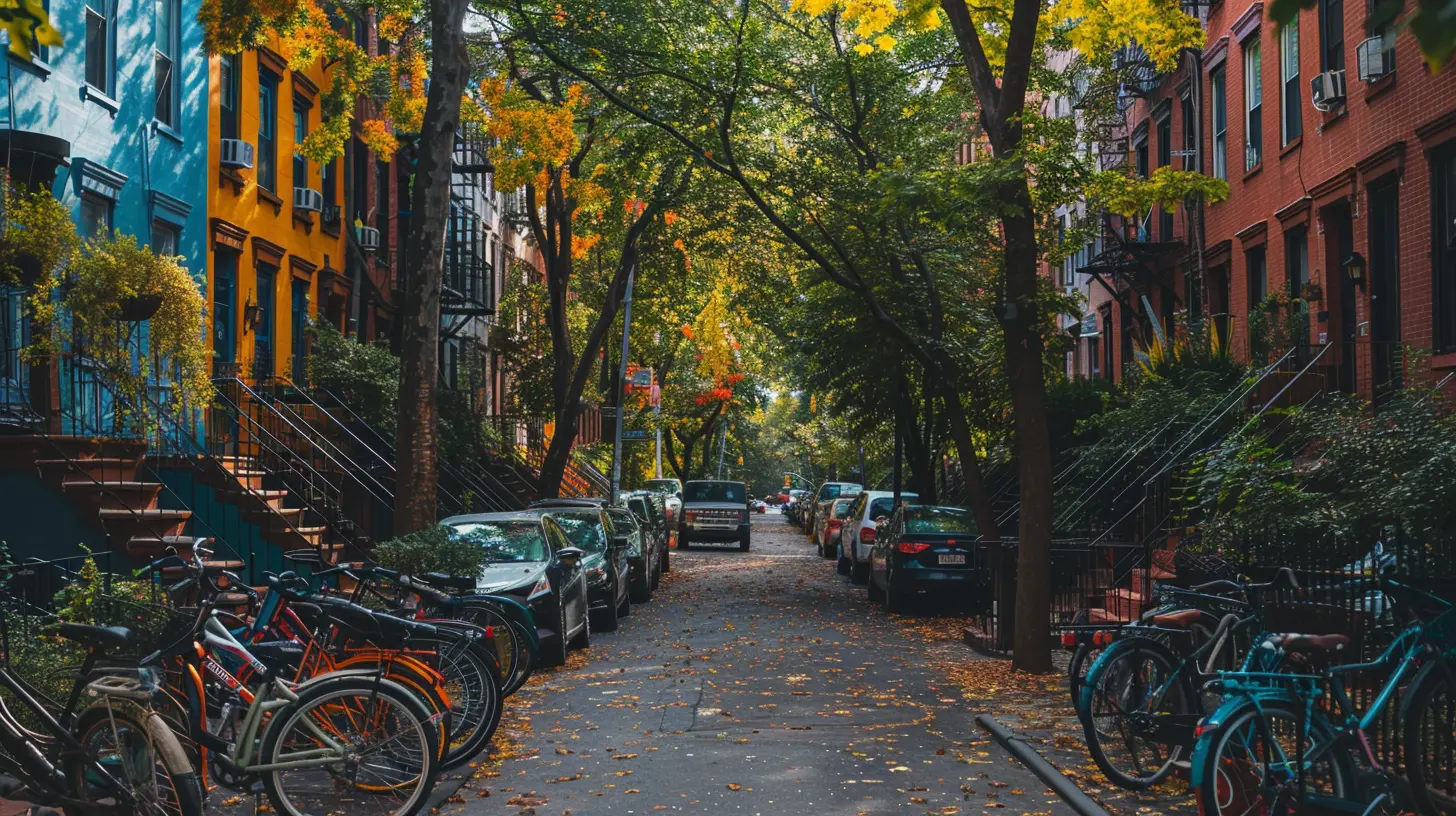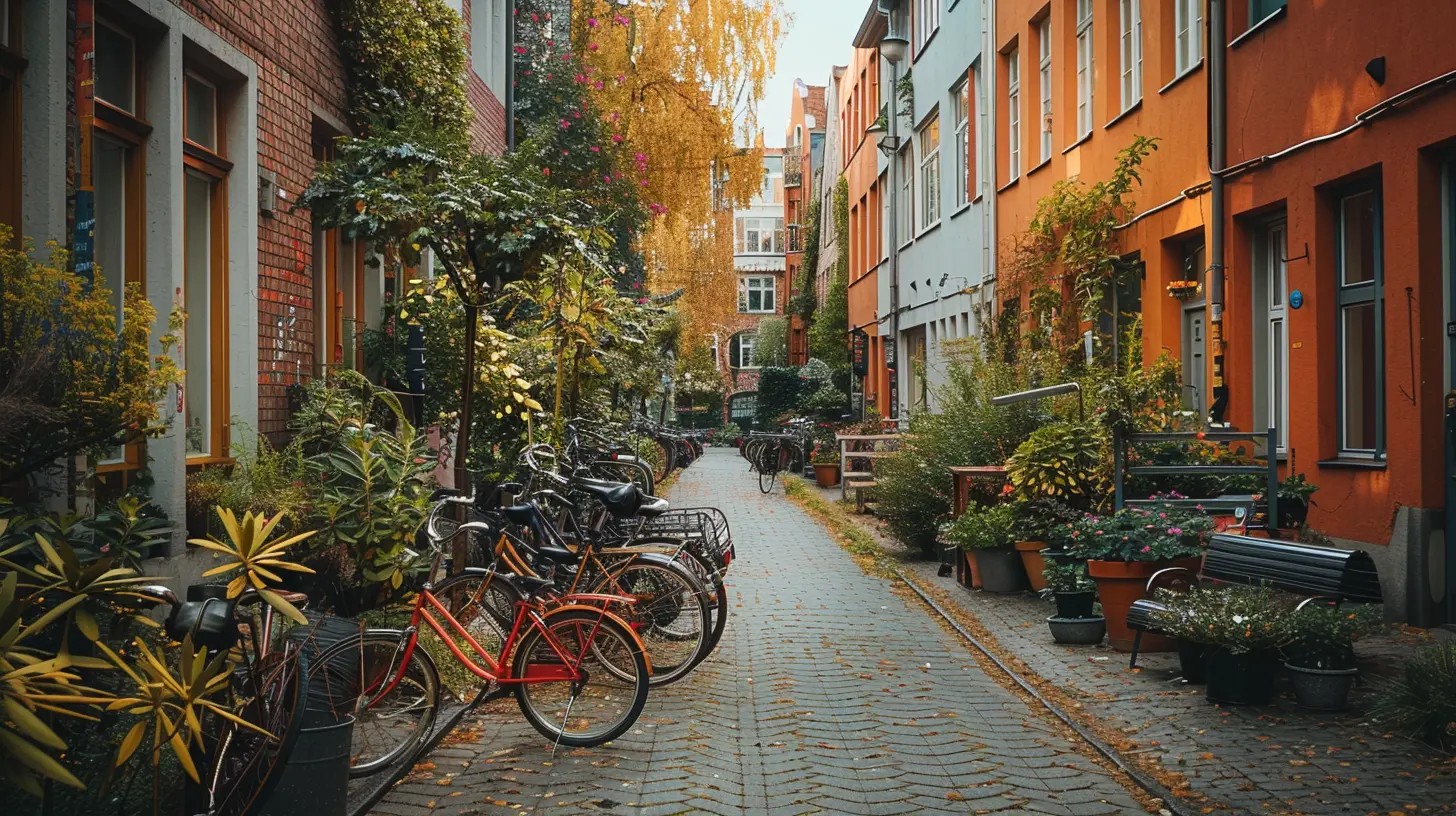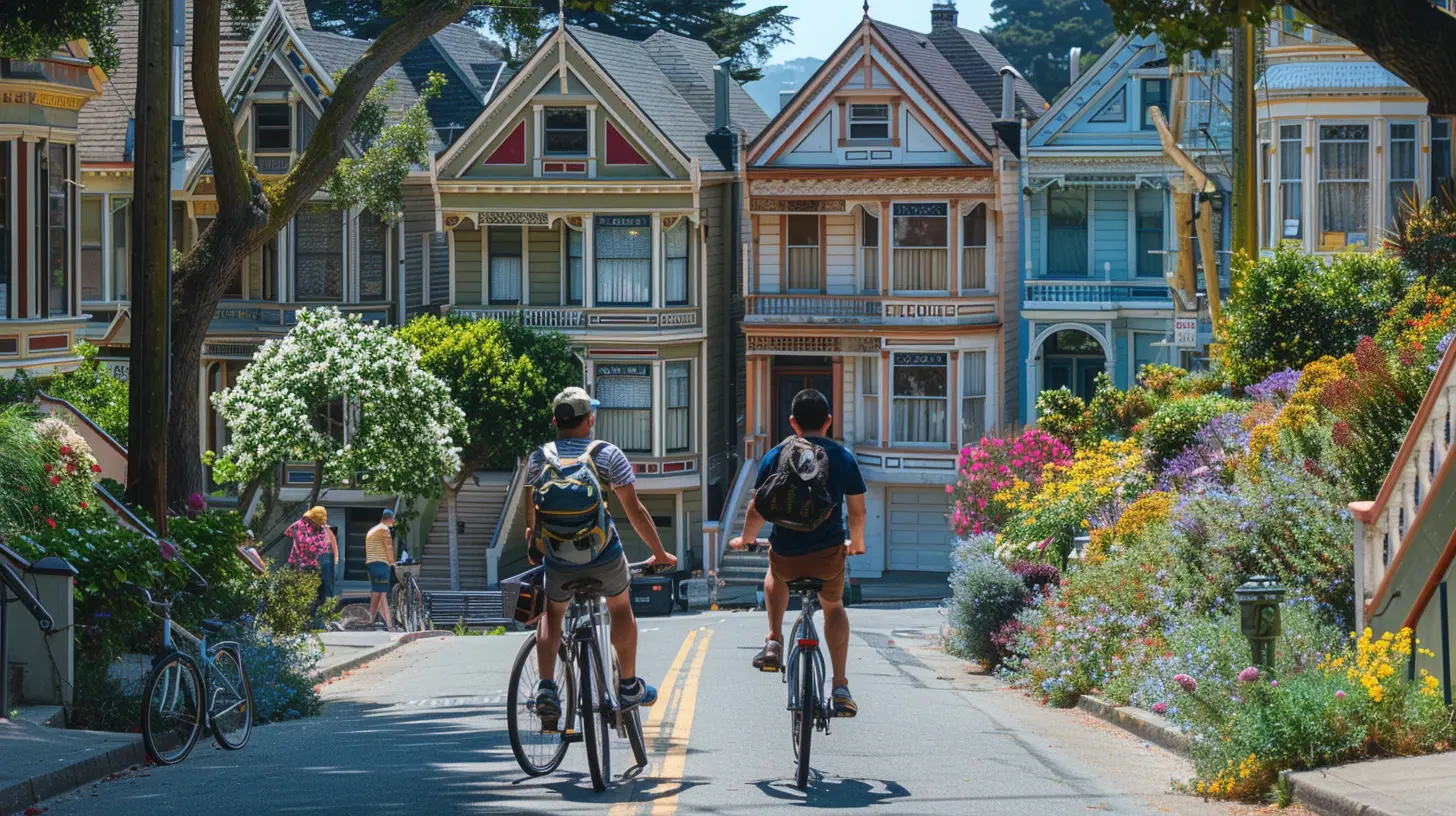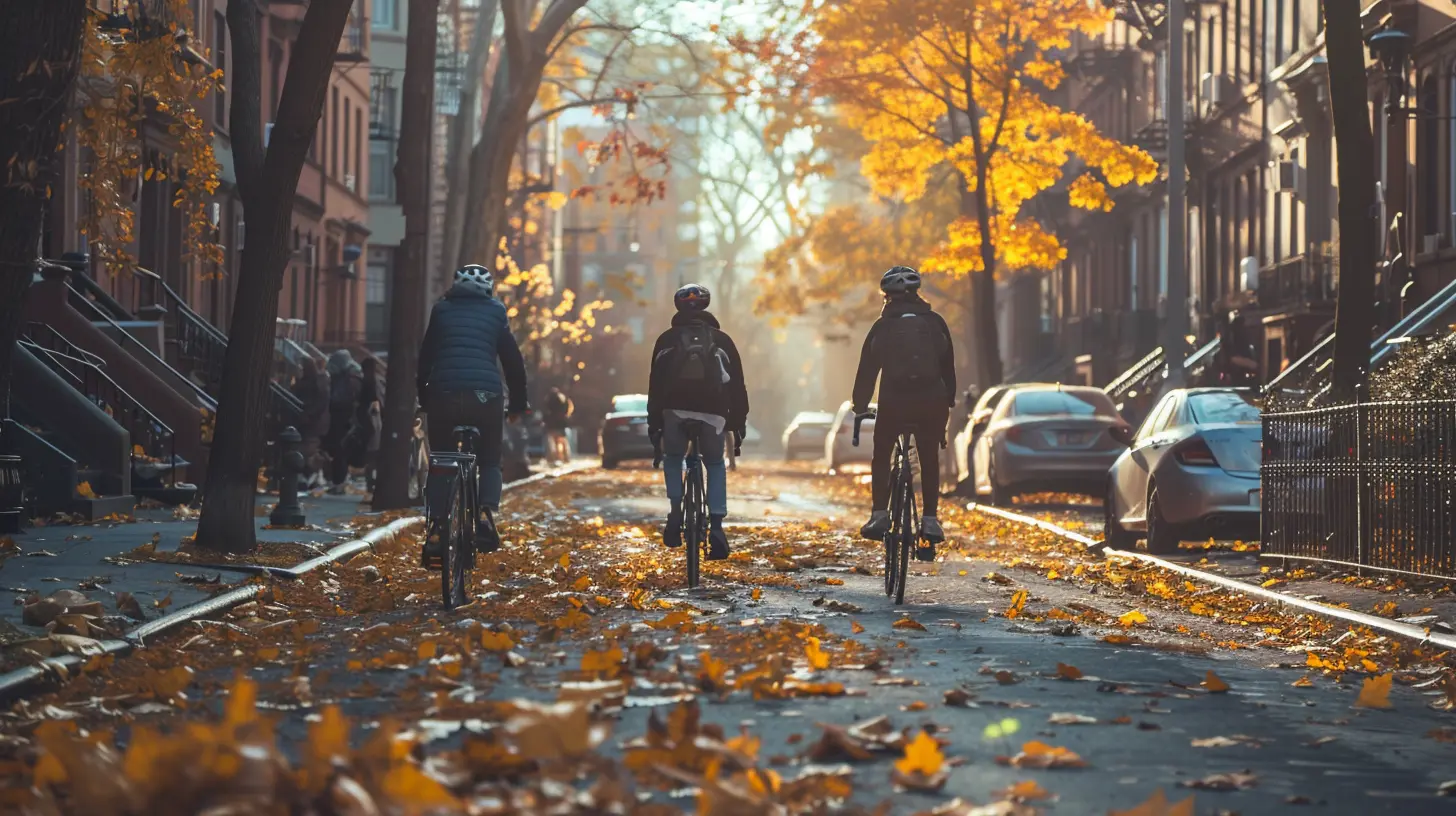Car-Free Living: Urban Neighborhoods Designed for Biking and Walking
19 July 2025
Picture this: Waking up in the morning, stepping outside, and taking a deep breath of fresh air—no honking, no exhaust fumes, just the quiet hum of bicycle wheels and the cheerful chatter of pedestrians. Sounds like a dream, right? Well, it’s becoming a reality in cities around the world. Car-free living is no longer a far-fetched utopian idea; it's happening now, reshaping urban neighborhoods into vibrant, walkable, and bike-friendly havens.
But is ditching the car and embracing a pedestrian-centric lifestyle worth it? Let’s dive deep into why urban neighborhoods designed for biking and walking are the future of city living. 
The Rise of Car-Free Urban Living
For decades, cities have been built around cars—wider roads, massive parking lots, and never-ending traffic congestion. But here's the thing: urban spaces weren’t always this way. In fact, before cars dominated the landscape, cities thrived on walkability and efficient public transport.Fast forward to today, and more cities are realizing that car-centric planning isn't sustainable. Congestion, pollution, and skyrocketing real estate prices have pushed city planners to rethink urban design. Enter: car-free neighborhoods. These areas prioritize pedestrian paths, bike lanes, and public transportation, making driving unnecessary (and often unwanted).
Why Are Cities Going Car-Free?
1. Traffic Congestion is a Nightmare – Sitting in bumper-to-bumper traffic every day? Yeah, no thanks. Car-free zones eliminate congestion, creating a stress-free commute.2. Pollution is Choking Our Cities – Fewer cars mean lower carbon emissions, cleaner air, and a healthier environment.
3. Quality of Life Skyrockets – More green spaces, wider sidewalks, and safer streets lead to happier, healthier communities.
4. Real Estate Becomes More Valuable – Walkable neighborhoods with great amenities attract homebuyers willing to pay a premium for convenience and lifestyle.

The Key Features of Bike- and Pedestrian-Friendly Neighborhoods
Not all neighborhoods can just rip out their roads and call it a day. Successful car-free areas are carefully designed with specific features that make them livable and efficient.1. Dedicated Bike Lanes and Paths
A true bike-friendly neighborhood isn’t just a city with a few painted lanes. It has protected bike paths, well-marked routes, and bike-sharing stations on every corner. Imagine hopping on a bike and seamlessly getting to work, a café, or the grocery store—without dodging reckless drivers.2. Wide, Pedestrian-Only Streets
Goodbye, cramped sidewalks. Pedestrian-only streets give people space to walk, socialize, and enjoy the urban landscape without getting shoved into traffic. Think of vibrant plazas filled with outdoor cafés and bustling farmers’ markets instead of parking lots.3. Reliable Public Transportation
Even in car-free neighborhoods, people still need to get from point A to point B quickly. Cities that implement efficient public transport—whether it's buses, trams, or subways—make it easy to ditch the car without sacrificing mobility.4. Mixed-Use Development
Want to grab a coffee, hit the gym, and shop for groceries—all within a 10-minute walk? That’s the beauty of mixed-use development. By keeping essential services close together, these neighborhoods remove the need for long commutes and excessive driving.5. Green Spaces and Parks
Car-free living means more room for trees, parks, and recreational areas. These spaces provide not only a mental health boost but also a natural way to cool down urban heat islands.
The Best Car-Free Cities and Neighborhoods Around the World
If you're wondering whether this concept actually works, take a look at these cities that are successfully pushing car-free living forward.1. Vauban, Germany
Vauban, a district in Freiburg, is a poster child for car-free living. Built with sustainability in mind, this neighborhood bans cars from most residential streets, offering bike lanes and an efficient tram system instead.2. Amsterdam, Netherlands
This city is basically a dream for cyclists. With over 500 kilometers of bike lanes and a strong biking culture, Amsterdam proves that a city doesn’t need cars to function seamlessly.3. Copenhagen, Denmark
Copenhagen takes bike-friendliness to the next level, with nearly 50% of residents commuting by bicycle daily. Plus, its pedestrian-only streets make walking enjoyable and safe.4. Barcelona’s Superblocks, Spain
Barcelona has implemented "superblocks"—groups of streets where cars are either banned or severely restricted. These areas prioritize pedestrians and cyclists, reducing noise pollution and making neighborhoods more livable.5. Venice, Italy
Venice has been car-free for centuries! The city relies on boats and walking paths, proving that humans can thrive in a completely car-free urban environment.
The Benefits of Car-Free Living
Still not convinced? Let’s break down the real benefits of ditching the car and embracing a walkable, bike-friendly lifestyle.1. Healthier Bodies and Minds
Walking and biking aren’t just good for the planet—they’re great for your health too. Regular movement reduces the risk of obesity, heart disease, and anxiety.2. More Money in Your Pocket
Owning a car isn’t cheap. Between gas, insurance, maintenance, and parking, the costs add up fast. Living car-free saves thousands of dollars every year.3. Stronger Sense of Community
Ever notice how car-dependent neighborhoods feel disconnected? Walking-oriented areas encourage people to interact, fostering a stronger sense of community and belonging.4. Safer Streets
Fewer cars mean fewer accidents. Pedestrian-friendly neighborhoods see significantly lower rates of traffic-related injuries and deaths.5. A Happier, Less Stressful Life
No traffic jams. No road rage. No stressful parking situations. Just peaceful streets, social interactions, and a calmer daily life. Who wouldn’t want that?Challenges of Car-Free Living (And How to Overcome Them)
Of course, transitioning to a car-free lifestyle isn’t all sunshine and rainbows. Here are some common challenges and how to tackle them:1. "I Need My Car for Work"
Not all cities have great public transit yet, but many are improving. Consider biking part of the way, using car-sharing services, or advocating for better transit options in your area.2. "What About Bad Weather?"
Rain or snow can be an obstacle, but good biking gear and well-designed covered paths can make all the difference. Plus, many car-free communities integrate indoor walking routes and transit connections.3. "I Have Kids—How Will This Work?"
Plenty of families thrive in car-free neighborhoods. With safer streets, better parks, and schools within walking distance, kids actually get more freedom and independence.4. "It’s Too Expensive to Live in These Areas"
Walkable neighborhoods are in demand, which can drive up housing prices. However, the money saved on car expenses often offsets the higher costs of housing.Is Car-Free Living the Future?
Absolutely. With climate change concerns, rising urban populations, and the undeniable benefits of a walkable lifestyle, more cities will likely shift toward car-free initiatives. While it may not be feasible everywhere just yet, the momentum is undeniable.The question is: Are you ready to embrace the change? Imagine a life with more freedom, fewer expenses, and a healthier, happier environment. The future of urban living isn’t behind the wheel—it’s on foot and two wheels.
all images in this post were generated using AI tools
Category:
Urban LivingAuthor:

Lydia Hodge
Discussion
rate this article
2 comments
Veronica Miller
This article highlights the benefits of car-free living in urban areas, showcasing neighborhoods that prioritize biking and walking. It's inspiring to see communities designed for healthy lifestyles and reduced reliance on vehicles. Great read!
November 23, 2025 at 3:41 AM
Sarah Carr
Car-free urban neighborhoods enhance community connections and promote sustainability, making biking and walking not just options, but vibrant lifestyles.
July 29, 2025 at 10:50 AM

Lydia Hodge
Thank you! I completely agree—car-free neighborhoods foster a sense of community and prioritize sustainable living, making biking and walking integral to daily life.


